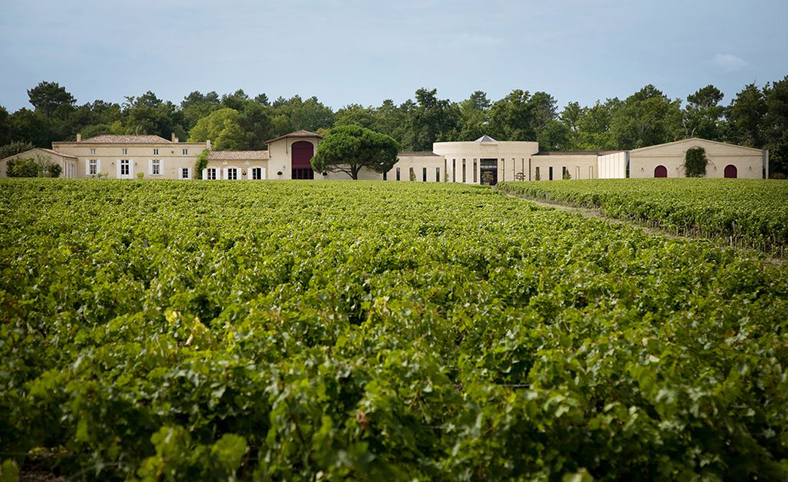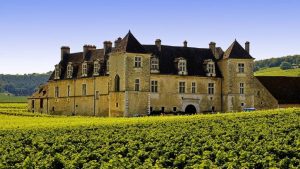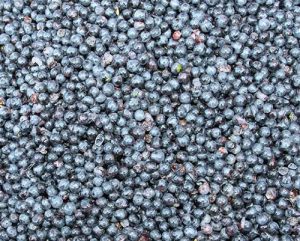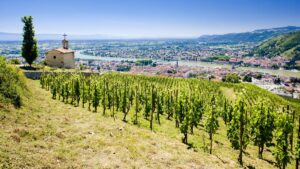
Domaine de Chevalier is undoubtedly one of the finest signatures in the Pessac-Léognan appellation. This historic property has never stopped evolving and reinventing itself, much to the happiness of loyal clients who have seen the domain’s wine improve in quality over the years. This is a model for success that the Bernard family has taken into several other properties. Here is a look into this emblematic domain with the help of Olivier Bernard.
The work of the Bernard family
The domain formerly known as Chivaley that covered just a few hectares of vines in the 17th century really managed to take off in the second half of the 1900s. This was when Arnaud Ricard purchased the place in 1865, investing heavily in the domain with his son Jean. The property was to remain in the hands of the family who built its reputation (notably entering the Graves classification in 1953) until 1983, when it was purchased by the Bernard family. They take care of a group founded in 1928 by Lucien Bernard that specialises in trading spirits and grands crus in Bordeaux. Olivier Bernard, the current owner, is the grandson of Lucien Bernard and the son of Liliane Cruse and Jean Bernard.
At the age of 23, Olivier Bernard had been given responsibility of the domain, and it was at this point that he met Claude Ricard who had been managing the property for 35 years already. From 1983 his passion grew and grew. They worked together for 5 years, time enough for Olivier to get to know and understand the nature and the terroir of Domaine de Chevalier.
The vineyard was gradually expanded, as were the buildings. The whole domain was renovated between 1984 and 1991, with both technical and aesthetic considerations borne in mind. The whole point of the building design is to avoid standing out, allowing the property to blend in harmoniously with the surrounding landscape. These additions came to complete the structure originally constructed in the 17th century.
Olivier took it upon himself to greatly extend the vineyard, so whilst it measured 18 hectares in 1983, it now covers around 65 hectares. It was during this period 40 years ago that many of the vines were replanted, so these ones are now reaching a certain level of maturity. Others are still quite young and aren’t currently used for the finest cuvées, though they certainly seem promising for the future. As the climate crisis worsens, the choice of grapevines planted has also had to be altered, with much more Cabernet Sauvignon grown now.
A forest garden
To visit Domaine de Chevalier is to likely be surprised by its location, isolated in the forest. The whole domain covers around 100 hectares, 65 of which are planted with vines. Overall, 63% of the vines are Cabernet Sauvignon, 30% Merlot, 5% Petit Verdot and 2% Cabernet Franc for the reds; for the whites it’s 70% Sauvignon and 30% Sémillon. The gradual extension of the vineyard has allowed for the rediscovery of fine terroirs that haven’t been used for quite some time. Adding the vines grown here to the already impressive range has brought extra complexity to the domain’s wine. “Chevalier wines have never been as beautiful as they are now, and the extension of the vineyard into other terroirs has played a part in this,” explains Olivier.
The forest location makes up much of the specificity of Chevalier’s terroir, establishing a cooler microclimate. As a result, the plant cycle here is slightly delayed compared to the rest of the appellation. The forest also provides a naturally rich ecosystem.
“A fine wine comes from a fine grape” – this is how Olivier sums up the domain’s philosophy, highlighting the importance of the work carried out in the vines. “And to obtain fine fruit, the terroir has to be top quality of course, and the vines are better when they’re older, treated respectfully along with the soils.” The domain has actually never used herbicides, but the Bernard family goes much further than this in their environmentally friendly methods. The use of chemical products has been banned here since 2016 and around 2/3 of the vines are now grown biodynamically. In practice, this looks like a part of the vineyard grown biodynamically, another organically, and another sustainably and without chemicals. The day of certification hasn’t yet come, though the domain would like to reach this milestone in the next few years. “We’re working gradually, but we’re starting to really get to know the biodynamic process. This is a tricky subject that requires the plants to recalibrate and us to totally change our work ethic. You also have to invest in new materials so that the vines can be treated 24/7, for example.” This year has proven to be particularly rainy so far, with over 600mm of rain having fallen at Domaine de Chevalier between 1st January and mid-June. These conditions demonstrate how complicated it is to practice biodynamics in a humid region like Bordeaux. “During rainy periods, the sensitivity of biodynamic vines becomes especially clear, so we have to be extremely vigilant and listen to the vineyard. It means being prepared to work at any time, including weekends and bank holidays. It’s a very complex project, especially in Bordeaux, but it’s also a wonderful thing that forces us to get closer to nature. If we don’t do this, we’re walking into a catastrophe.” If all goes well, the domain will hopefully be able to seek official biodynamic certification this year, for the white cuvées first.
The harvests are carried out by hand and there is a triple sorting process. The final sorting session, grape by grape, allows for real precision in terms of the maturity and health of the fruit, elements that can sometimes be invisible in the mass of bunches. The vats are then filled using only gravity.
Olivier elaborates a bit on the importance of these vines: “a fine wine is one where the grape variety is given over largely to the terroir, the grape is just a vessel. In the best vintages, Cabernet can have much in common with Merlot and vice versa. The maturity of the grape is important for this, with the terroir expressing itself over the specific variety.”
Careful work in the winery
For everything to do with vinification, the Bernard family has been working with the oenologist Stéphane Derenoncourt since 2002, notably to begin maturing the reds on lees. The work in the winery is classic, carried out gradually.
The slow pressing happens in a pneumatic press and the single parcel vinification in barrels. This kicks off with specially-selected yeasts to begin with, then the indigenous yeasts also have an effect. For the white cuvées, there is regular stirring to bolster the structure of the wine and bring some body to it.
The whites are matured in 30% new wood, 40% for the reds, on fine lees for both colours. Any blending takes place quite early, generally in January following the harvest. Natural clarification means there is only a light filtering before bottling.
Oliver explains how advancements made in recent years have allowed for a reduction in added sulphur. The fact that both the reds and whites are now matured on lees protects them from oxidation. Equally, the use of innovative cork stoppers means that sulphur can reliably be reduced. The amount added is at a very reasonable level.
Food and wine pairings
The white wines from the property can be enjoyed young, with lovely fresh fruit (grapefruit, lime) and long, powerful palates. These pair nicely with crustaceans like crab, lobster, crayfish and prawns, as well as grilled fish. The more mature whites have more complex aromas (exotic fruit, mango, white peach), oilier fish is recommended, as are soft textures like mushroom or foie gras. Fine cheeses also work really well.
For the young reds that have retained a certain tautness, powerful dishes like red meat are sure to be a success.
The wines from Domaine de Chevalier
The wines from this property are characterised by their finesse and elegance, as well as their tautness and their purity. Like many of the wines from Pessac-Léognan, they have the advantage of being drinkable young whilst also aging wonderfully.
Other Bernard family properties in Pessac-Léognan and Sauternes
Domaine de la Solitude and Château Lespault-Martillac in Pessac-Léognan, and Clos des Lunes in Sauternes are also run by the Bernard family.
Domaine de la Solitude is a very old Martillac property that belongs to the Sainte Famille religious community and is worked by the Bernard family. Both the reds and whites from here are supple, fruity and flavoursome. Their prices are still pleasing, too!
Château Lespault-Martillac, also located in the Martillac commune, is one of the oldest growths in the appellation. The Bolleau family handed over the management of the property to Olivier Bernard in 2009. And he has been fully invested in developing the domain, accolades for which have been increasing year on year.
Finally, in 2011, the Bernards founded a new property in Sauternes, Clos des Lunes, which is entirely dedicated to producing dry, white cuvées. Here, it’s Hugo Bernard (Olivier’s son) who runs the show. The domain found fans straight away with its high-level wines that are taut and crystalline with a lovely minerality.



